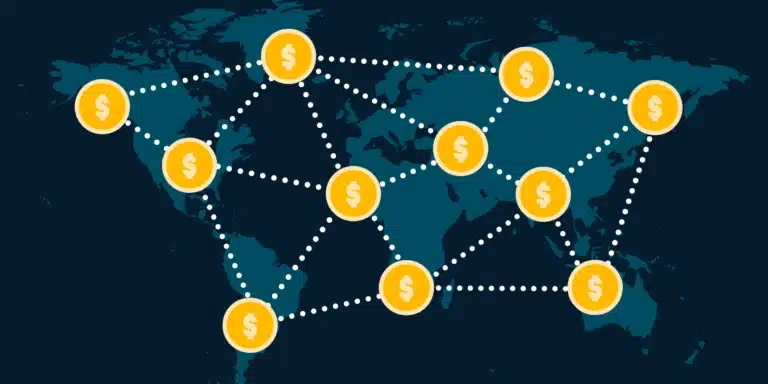Crafting a Global AP Strategy: Roadmap to Success
When economic times are good, financial processes often take a backseat. However, when faced with financial downturns, companies must shift their focus toward preserving cash and instituting operational efficiencies.
Effective cash and accounts payable management has taken center stage in today’s ever-evolving financial landscape. During economic uncertainty, weaknesses in the AP process are uncovered, forcing the finance team to recalibrate their cash management strategies. As the economy ebbs and flows, it has become crucial for businesses to prioritize this aspect of their operations to weather uncertain times and emerge stronger.
Slowdowns Caused by Manual Accounts Payable Processes
A staggering 84% of the average finance team’s day is consumed by manual accounts payable processes. This not only hinders productivity but also limits the effectiveness of the finance department in general. Shockingly, only a few finance departments have automated their AP processes, enabling transactions to flow directly through their Enterprise Resource Planning (ERP) platforms without human involvement.
Typically, accounts payable employees spend countless hours inputting the same data into multiple systems, shuffling through paperwork and spreadsheets, and trying to obtain accurate information. This time could be better utilized by engaging in value-adding activities like data analysis, cross-department collaboration, or improving supplier relationships. And in today’s unpredictable landscape, most CFOs want their AP teams to shift their focus toward more strategic activities.
The Automation Play
The traditional method of sifting through emails to find and approve supplier invoices is time-consuming and tedious. However, with the implementation of automated solutions, this process can be streamlined significantly.
As modern businesses strive to optimize cash performance, many are turning to automation to streamline their AP processes and workflows. By automating payment processes and re-evaluating payment terms, companies can gain better visibility into cash flow while improving on-time payment records. Additionally, this approach can lead to more accurate forecasting and, ultimately, greater financial stability.
- Steps to Building a Global Accounts Payable Strategy
Companies that are ready to build out a successful and global AP strategy should begin with these four steps:
- Get senior management’s support.
Any successful automation initiative depends on senior management’s commitment to embracing new technologies and change.
The CFO is essential in driving this initiative and ensuring the right systems are in place to meet current and future needs. It’s not enough for the CFO to merely be present at the table—they need to take charge of the technology and its implementation to ensure a successful transformation.
- Embrace automation from day one.
Automation is changing how companies do business, and finance leaders must fully embrace automation culture to streamline operations.
Business leaders must prove that they are willing to do whatever it takes to help maximize efficiency, and in terms of financial automation, that means taking a critical look at your AP processes to determine what manual activities could be replaced by advanced workflows. A robust ERP solution integrated with the right finance automation software gives businesses better insights into cash flow and improves supplier management. As companies continue to grow and evolve, the importance of utilizing the appropriate automation tools increases.
- Show your finance team the benefits of automation.
Concerns among team members can hinder technology adoption and transformation, so it’s essential to gain their support and ease any fears about replacing their manual processes with automated workflows.
Finance team members are familiar with the current accounts payable workflows and can provide valuable insight into what works and what doesn’t. Showing them how automation will enable them to focus on more high-level tasks and responsibilities that align with the company’s goals can help raise morale and increase adoption. Additionally, involving them in selecting the technology tools they will use daily enables them to be strategic partners in the organization.
- Track your key performance indicators (KPIs).
Tracking metrics is crucial in implementing a successful global accounts payable strategy. However, a reported 40% of finance departments fail to track any metrics at all.
This lack of performance measurement makes it challenging to determine what’s working and what’s not. As a result, it becomes difficult to chart progress in implementing improvement strategies or building a business case for automation. To tackle these issues, it is imperative to start tracking key metrics such as:
- Total number of invoices processed
- Average cost per invoice
- Time it takes to process an invoice
Setting up KPIs makes it easier to identify areas that require adjustments, make appropriate changes, and report back to senior management on the results of their automation investments. Failure to track metrics could hinder a company’s growth, making this an issue that finance departments cannot afford to ignore.
Future-Proof with Finance Automation
Inefficient accounts payable departments can seriously threaten a company’s overall operations. However, many organizations are still heavily reliant on outdated manual processes, often leading to missed opportunities to implement automation.
Convincing companies and their leaders to invest in modernizing these processes can be daunting. Still, with the right approach, CFOs and finance professionals can play a strategic role in getting senior leaders to recognize the importance of investing in the future.
By investing in automation now, companies can reap significant cost savings, making it a wise investment for any organization looking to stay ahead of the game.
Learn How Noom Built a Global Accounts Payable Strategy
with Tipalti and NetSuite




